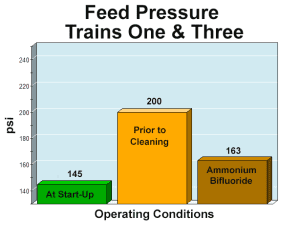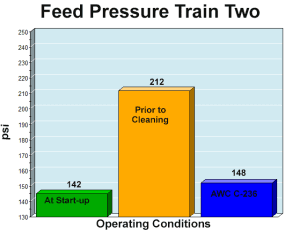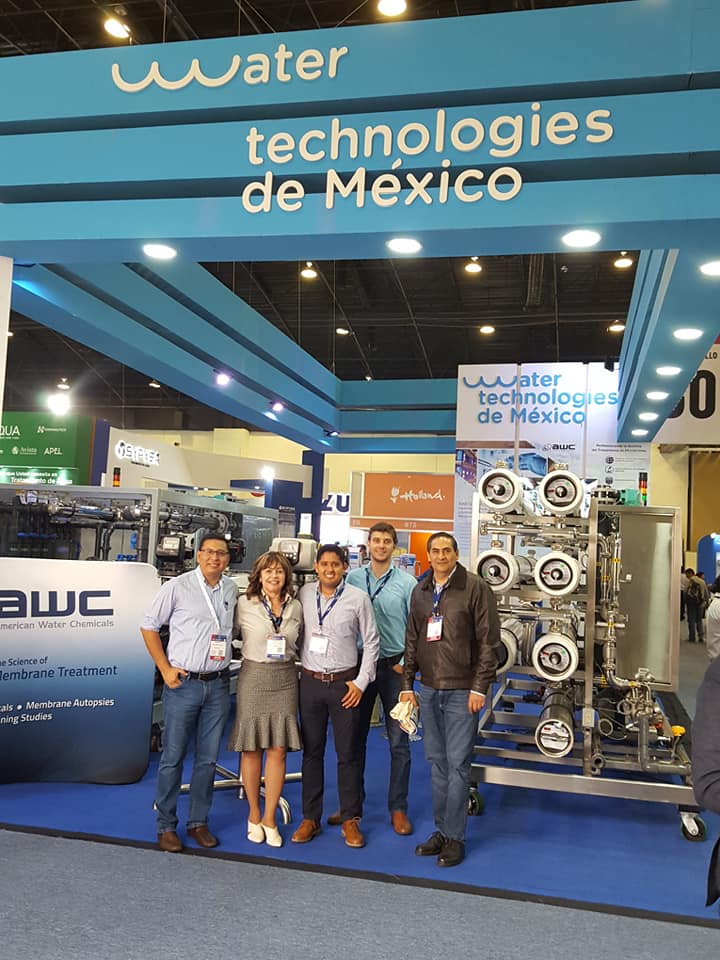An 8-MGD water reclamation system in Northern California was experiencing membrane fouling that was increasing the required feed pressure to produce water. A membrane autopsy showed that the fouling was caused by silica scale.
Membrane Cleaning Chemicals Results – Train One & Three
The system consisted of three trains, each designed to produce 1850 gpm of permeate at a feed pressure of 145 psi. When the required feed pressure to produce 1850 gpm increased by over 27%, Train 1 and Train 3 were cleaned using an ammonium bifluoride (ABF) based cleaner. The ABF based cleaner performed well, decreasing feed pressures for Train 1 and Train 3 by 18.5%. This was no surprise, Ammonium bifluoride is known to be an excellent silica cleaner; however, ABF poses severe health risks to plant operators, which include cardiac arrhythmia and tetany through inhalation and skin absorption.
In the meantime, Train 2 had reached the the maximum feed pressure set-point, and the operators were forced to operate at a reduced permeate output of 1680 gpm to avoid an automatic system shutdown. Train 2 was cleaned with AWC C-236, an ABF-free high pH membrane cleaning chemical engineered to remove silica.
Membrane Cleaning Chemicals Results – Train Two
The membrane cleaning results far outperformed those of the ABF based membrane cleaner; the feed pressure declined by 30.2% while the permeate productivity simultaneously increased by 10%. The system had effectively been restored to start-up performance.
Due to its unique formulation AWC C-236 high pH membrane cleaning chemical had successfully removed the foulant and restored feed pressures near start up values without the use of ammonium bifluoride thus mitigating health and safety risks.
To Learn More American Water Chemicals Membrane Cleaning Chemicals




